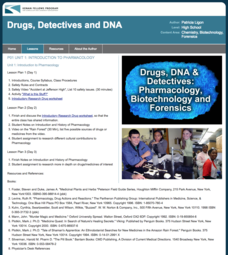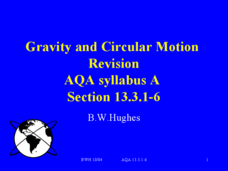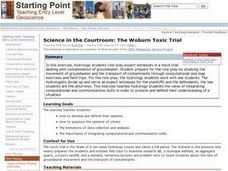Exploratorium
Cardboard Tube Syllabus
Construct paper tubes and then try out a few optical illusion tricks:
See a virtual hole in your own hand
Get a grasp of how the eyes combine images
Notice that one eye is dominant over the other
Reveal how your eyes adjust to...
Curated OER
Teaching Bioethics
Use this guide for incorporating bioethics into your biology curriculum or for teaching a unit on the topic. A syllabus for an entire year is also available. The resource provides lists of online, video, and printed resources; however,...
Intel
Cell-to-Cell
The third in a series of 10 STEM project-based lessons focuses on cells types, functions, and physiology. Through research, discussions, writings, and presentations, groups learn about the difference between plant and animal cells, the...
Curated OER
Blood Brothers
Students study the blood characteristics of a number of distinct racial/ethnic groups. They build skills in observation, information gathering and processing. Students experiences strongly reflect the nature and intent of the current...
Curated OER
Amazing Carbon
Explore carbon and bonding with this worksheet. First, class members read a short excerpt about carbon and its characteristics. In response to the reading, they draw an electron dot diagram of carbon as well as diagrams of compounds...
Curated OER
Matter vs. Non Matter
This note card has six items on it, three are matter and three are not matter. your class should be able to classify each and explain the characteristics of matter.
Curated OER
The Number of Neutrons
Although the focus of this worksheet is the neutron, you cannot talke about them without also dealing with protons and electrons! Chemistry kids fill in a table of 14 elements, identifying the mass, atomic number, isotopic symbol, and...
Curated OER
Electron Dot Structures, etc.
In this electron dot structures handout, new chemists read about electron arrangement and how to draw electron dot diagrams. They complete a chart with the mass number, atomic number, isotope notation, number of neutrons, and Bohr...
Curated OER
Bond Type
At the top of the page are a reading passage and colorful diagram that depicts the tug-of-war that occurs between bonding molecules due to electronegativity. High school chemists fill in a chart with electronegativity values, the...
Edmond Public Schools
8th Grade Science Resource Book: Unit 2 - Physics
Get things moving with this extensive collection of physical science resources. Covering the fundamentals of measurement, graphing, lab safety, and experimental design as well as the specific scientific concepts...
Kenan Fellows
Unit 3: Genetic Variation
What happens when genes change? Junior genetic investigators examine the effects of mutation in the third unit of a four-part Biotechnology series. Individuals discover the types of mutations through a series of PowerPoints, then partner...
Kenan Fellows
Unit 1: Introduction to Pharmacology
Learn about the study of medications, including those found in nature and those made synthetically. The first of four lessons in a series on pharmacology includes lectures, hands-on experiments, research, and more.
Curated OER
Gravity and Circular Motion
Go around and around in your physics class with this presentation on circular motion. Diagrams bring the definition to life. Formulas for angular acceleration, centripetal force, gravitation, and potential in a radial field are given....
Alabama Learning Exchange
Experiencing Newton's Laws of Motion
Fifth graders study Newton's three laws of motion in a whole group setting using their textbook as a resource. They work in small groups to create a multimedia presentation of one of the laws to present to the class. They design an...
Curated OER
Science in the Courtroom: The Woburn Toxic Trial
Students role-play expert witnesses in a mock trial dealing with contamination of groundwater. They prepare for the role-play by studying the movement of groundwater and the transport of contaminants through computations, map exercises...
Curated OER
Log Book Guidelines
Students are given the guidelines for their log books. The log book first starts with what is the purpose of a log book. Then students have the instructions on how to organize a log book. From there student are given step by step...
Curated OER
How is the Periodic Table Arranged?
In this periodic table worksheet, learners fill in a portion of the periodic table with the atomic number of the element, the electron configuration of the element, the number of shells and the number of outer shell electrons. They...
Curated OER
What Information is on the Periodic Table?
In this elements worksheet, students review the information that is found on a periodic table including atomic mass, chemical symbol, atomic, number, and electron configuration. This worksheet has 7 fill in the blank questions.
Curated OER
What are the Trends in the Periodic Table?
In this periodic trends worksheet, students fill out a portion of a periodic table with the atomic number, the atomic radius, the number of shells and the number of outer shell electrons for each element shown. They answer six questions...
Curated OER
Groups in the Periodic Table
In this groups of the periodic table worksheet, high schoolers use on line sources to find characteristics of the alkali metals, the alkaline earth metals, the transition metals, the halogens and the inert gases.
Curated OER
Periodic Table of Elements on Mars
In this periodic table of elements worksheet, learners are given clues and descriptions for elements in order to determine where they belong in the "Martian Periodic Table". They place the elements in the proper place in the given...
Curated OER
Matter and Energy-Scientific Notation
In this scientific notation learning exercise, students are given ten numbers in common form and they convert them to scientific notation. They also are given ten numbers in scientific notation that they convert to common notation.
Curated OER
Matter and Energy-Metric Units and Prefixes
In this metric system worksheet, students are given ten sets of measurements with metric units and they are to place each set of measurements in the proper order from the largest to the smallest based on the unit.
Curated OER
Converting among Units
In this conversion worksheet, student use the factor-label method or unit analysis method to convert given measurements from one unit to another unit.
Other popular searches
- Modern Dance Syllabus
- Constitutional Law Syllabus
- Human Services Syllabus
- Copper Tooling Syllabus
- Syllabus Format
- Common Syllabus
- Electronic Media Syllabus
- Biology Course Syllabus
- Syllabus and Hopping
- Precalculus Syllabus
- Create a Biology Syllabus
- Practicals Syllabus























